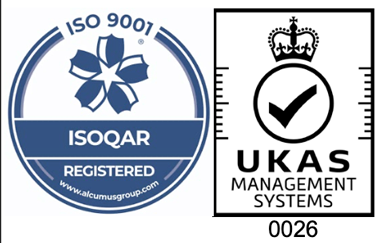Top 5 Food-Grade Rubber Materials
23rd October, 2018
Rubber products made for these industries need to be able to hold up to high-speed abrasion and speed, continuous operation, and be both mould-resistant and non-toxic.
So, what exactly makes rubber Food Grade?
Food Grade Rubber is governed by the US Food and Drug Administration (FDA). Although it’s based in the United States, the rules and standards it sets are adopted worldwide. These are mirrored by the processes set in place by the BSI for manufacturing food-grade rubber in the UK.
Materials coming into contact with consumables must be approved by the FDA. This involves producing them in a specific manufacturing environment, as well as testing them rigorously to ensure they can handle the challenging applications posed by food processing and beverage machinery.
What should food-grade rubber be like?
Food-grade rubber needs to meet specific standards to be approved. Usually, they are:
- Odourless
- Tasteless
- Resistant to bacteria buildup
- Used for food or beverages
- Reliable at temperature extremes
- Non-toxic
- Non-marking
- Non-allergenic
What are the five best food-grade rubber materials?
To qualify as FDA-approved food-grade rubber, the products must be made from only the ingredients listed in the FDA White List. There are many different materials that are approved as per this list, but we’ve listed the top 5 below.
- Ethylene Propylene Diene Monomer (EPDM)
EPDM rubber is characterised by its capacity for use in a wide range of applications. It is flexible, rugged, and made from both tasteless and odourless compounds. It also performs exceptionally well in temperature ranges -40 to 121 degrees Celsius.
Uses: food and beverage industry, automotive products, parts for HVAC systems - Fluorocarbon
Fluorocarbon rubber is known for its high-temperature resistance, as well as its resistance to harsh and abrasive chemicals. It’s also completely waterproof and is invisible underwater. Fluorocarbon rubber works best between temperatures of -26 and 226 degrees Celsius.
Uses: aircraft engine seals, seals for automotive fuel handling systems - Neoprene
You may know neoprene as the material used for fridge and door seals. It’s smooth, abrasion-resistant under most circumstances, and an oil repellent – perfect for use in kitchen equipment where greasy food products are cooked.
Uses: door and refrigeration seals, automotive under-the-hood parts - Nitrile:
Another well-known rubber material; nitrile is the seal industry’s most popular elastomer. It features a combination of excellent resistance to petroleum-based oils and fluids with high abrasion resistance. Typically, it will operate best within a temperature range of -40 to 125 degrees Celsius.
Uses: most oil-resistant applications, low-temperature military uses, oil rig applications, seals, gaskets, aircraft hoses. - Silicone
Silicone is characterised by its thermal stability, low toxicity, and low chemical reactivity. It’s also fairly heat-resistant, with operating temperatures ranging from -100 to 314 degrees Celsius.
Uses: food-grade sealants, adhesives, lubricants, medical applications, insulation, and cooking utensils.
Food-grade rubber from Aquaseal
Aquaseal’s food grade rubber is certified by the FDA under Title 21 (FDA CFR 177.2600) – legislation which covers rubber for repeated use.
If you are looking for a rubber company that puts their customers and products first, get in touch today!


